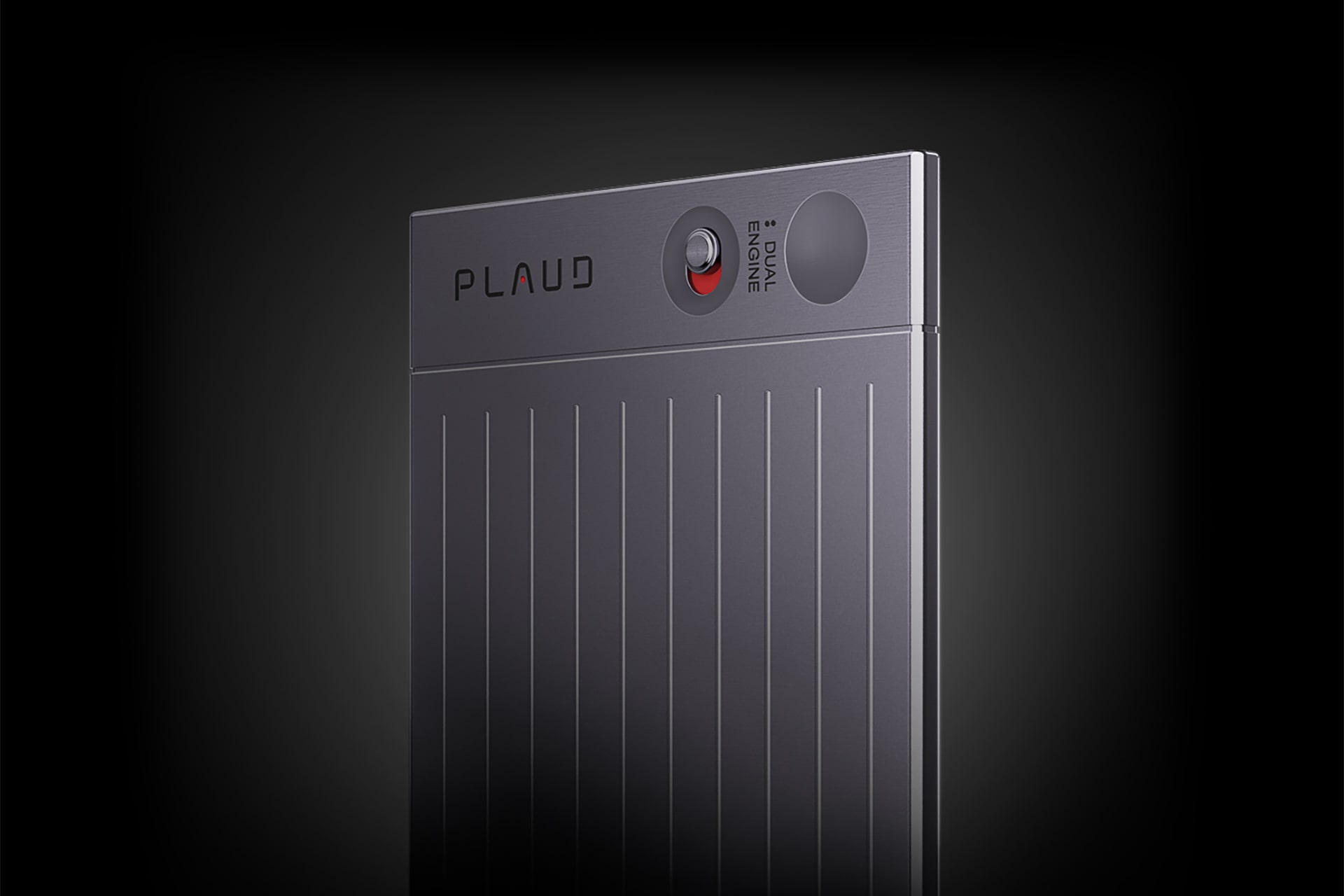Once absent from the mainland Chinese market, smart voice recorder brand Plaud has returned.
On September 22, Plaud officially announced its entry into mainland China at a product launch event. It introduced the Plaud Note Pro, priced at RMB 1,299 (USD 181.9). Two additional products, the Plaud NotePin S and the Plaud Note, also went on presale at RMB 1,249 (USD 174.9) and RMB 1,149 (USD 160.9).
At these prices, Plaud’s devices sit above many domestic competitors. Earlier, DingTalk released its DingTalk A1 in two editions, priced at RMB 499 (USD 69.9) and RMB 799 (USD 111.9). Mobvoi’s TicNote sells for RMB 999 (USD 139.9) on e-commerce platforms.
Plaud’s launch event was modest, attracting limited attention and contrasting with its higher-profile campaigns overseas.
In July, official figures showed Plaud had sold more than one million units worldwide. Its artificial intelligence-powered recorders, first to market in their category, grew tenfold annually over the past two years. By November 2024, Plaud’s annualized revenue had reached USD 100 million, according to 36Kr, which profiled the company’s rise.
The company’s growth came from identifying an overlooked niche. In overseas markets, Apple users often faced a fragmented process: recording audio on one device, then using third-party tools for transcription and analysis. Plaud’s combined hardware-and-software model filled that gap.
It also moved quickly to capitalize on the rise of large language models, becoming one of the first to benefit from demand for AI-powered recording devices.
Although founded in Shenzhen, Plaud has primarily sold outside mainland China in recent years.
That strategy made sense. In China, more than 35% of voice recorders already support real-time transcription, according to 36Kr. Accuracy has improved from 68% in 2021 to 87% in 2025, and real-time translation across 35 languages is now standard in high-end models.
This means Chinese users already understand the technology. They have abundant choices and high expectations for features, user experience, and value.
For any new entrant, breaking into a crowded market dominated by strong brands is the toughest level of competition. Plaud’s restrained launch underscored its cautious approach. The company has some brand recognition thanks to its overseas success, but whether it can break through at home remains uncertain.
A crowded, cutthroat market
Plaud’s return to China comes at a time when the domestic market for AI-driven recording and transcription is already crowded and fiercely competitive. Players broadly fall into four categories:
- The first group consists of traditional tech firms such as iFlytek and Sogou (now part of Tencent), which dominate the professional segment. Their products excel in accuracy, security, and privacy, offering offline transcription and local data storage. These features are essential for court proceedings, academic interviews, and investigative reporting.
- The second group includes workplace collaboration platforms like DingTalk and Lark (known in China as Feishu). Their offerings combine hardware and software or embed transcription tools directly within their ecosystems. Just months ago, DingTalk launched its recording device, the DingTalk A1, which syncs recordings to the cloud, auto-generates meeting summaries, and assigns tasks.
- The third group comprises smartphone makers such as Huawei and Xiaomi. They integrate AI-driven transcription into their devices, using native microphones and system tools linked to cloud services and notetaking apps. Their advantage lies in ecosystem integration, making transcription a convenient productivity feature.
- The fourth group is made up of AI-native companies like Plaud and Mobvoi. Unlike the tech giants, they tend to target niche scenarios such as cross-border meetings, multilingual interviews, and content production. Their strategy is to combine hardware with AI in a tightly integrated way, hoping to carve out space in markets dominated by larger ecosystems.
Competition in this space is less about piling on features and more about addressing specific user pain points.
Plaud’s new Pro edition reflects that strategy. The device extends maximum recording time from 24 to 50 hours and expands pickup range from three meters to five meters. It supports both phone calls and in-person meetings. The Pro also adds multimodal capabilities, linking recordings with images and text and allowing users to tag key information.
Unlike earlier screenless models that relied on indicator lights, the Pro includes a one-inch display for checking recording status, battery life, and sync progress in real time.
Still, the Pro largely builds on the design of its predecessor, the Plaud Note, with incremental refinements rather than major adaptations for the local market.
A check of Apple’s app store shows no China-specific Plaud app. The most recent update to the available version was two months ago. According to 36Kr, a localized app is expected to launch after the National Day holiday.

Will the same model work again?
In recent years, some hardware firms have found success by first manufacturing in China, building traction in overseas markets, and then reintroducing their products to the domestic market.
From this perspective, Plaud’s move makes sense. First build brand recognition abroad, then return with global credibility. “It’s a classic export-then-import play. Global traction helps with pricing power, and overseas case studies reduce domestic buyer hesitation,” a consumer tech investor told 36Kr.
But China’s hardware market is unforgiving. Industry consensus is that no company can sustain a run of breakout products. Hardware upgrade cycles are longer than those of consumer goods, and buyers tend to make more deliberate decisions. Without leapfrog-level innovation, sales momentum quickly stalls.
The challenge is structural. Hardware must be designed not only for novelty but also for manufacturability. Plaud learned this after the success of the Plaud Note, when it released the Plaud NotePin, a pill-shaped wearable recorder. The compact form made it light and discreet but also introduced usability problems. Some users reported delays when starting or stopping recordings, causing missed content.
The small size also limited microphone number and spacing, reducing its ability to capture clear sound in noisy environments. Algorithms could not fully compensate, making the device effective only in quiet settings.
Sales reflected these shortcomings: the NotePin failed to match the Note’s momentum on Amazon.

This plateau overseas may have pushed Plaud back toward China, where competition is even tougher. Smartphone giants like Huawei and Xiaomi already offer transcription built into their devices, while platforms such as DingTalk and Lark integrate it directly into workflows. For these players, hardware is only an entry point. Their real strength lies in software, which ultimately defines hardware’s ceiling.
“In pure business scenarios, it’s very hard for new brands like Plaud to gain share,” a founder of an overseas transcription-focused startup told 36Kr. “Users are locked into existing platforms for recording habits, storage, and collaboration. Even if Plaud outperforms in one area, it’s hard to break entrenched workflows.”
These entrenched rivals overlap Plaud’s functions and enjoy the advantage of ecosystem integration, from data connectivity to localized services. For independent hardware makers, that means shrinking room to maneuver.
Yet China’s market remains vast. Plaud has targeted iPhone users, a group several hundred million strong in China. These users often pay for premium experiences, which could give Plaud some space to compete.
Pricing, however, is a critical test. Plaud’s overseas model combined hardware sales with an annual subscription of at least USD 240. Without strong brand loyalty or ecosystem lock-in, Chinese users are unlikely to accept such costs.
As a result, Plaud has adjusted its pricing strategy. Membership now comes in three tiers: a free standard plan offering 300 minutes of transcription per month, a professional plan at RMB 299 (USD 41.9) per year for 1,200 minutes, and a premium plan at RMB 899 (USD 125.9) per year for unlimited transcription.
Compared with rivals, Plaud’s mid-tier pricing looks competitive. DingTalk A1 offers 1,000 minutes free each month plus 10 gigabytes of cloud storage; its paid tiers cost RMB 599 (USD 83.9) and RMB 1,499 (USD 209.9) annually. Mobvoi’s TicNote charges RMB 578 (USD 80.9) per year for 1,500 minutes and RMB 1,188 (USD 166.3) for 6,000 minutes.
While software subscription pricing is stable across the industry for now, whether it holds remains uncertain.
Plaud’s founder, Xu Gao, a former financial advisor and serial entrepreneur, recognized the difficulty of China’s market early on, which is why the company first sold overseas. Now, with more experience and resources, Plaud is testing the waters at home. This return may be both a trial run and its final chance to break through its growth ceiling.
KrASIA Connection features translated and adapted content that was originally published by 36Kr. This article was written by Huang Nan for 36Kr.
